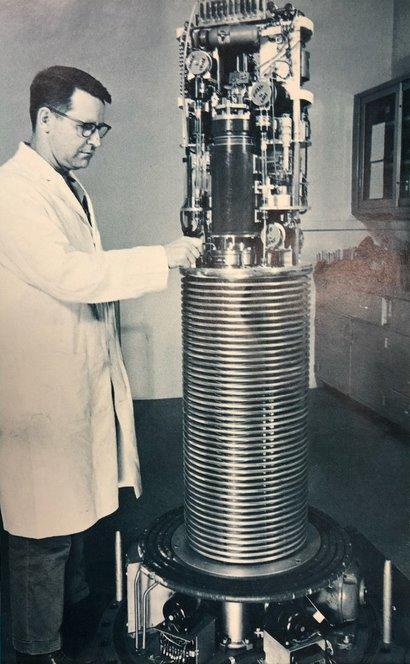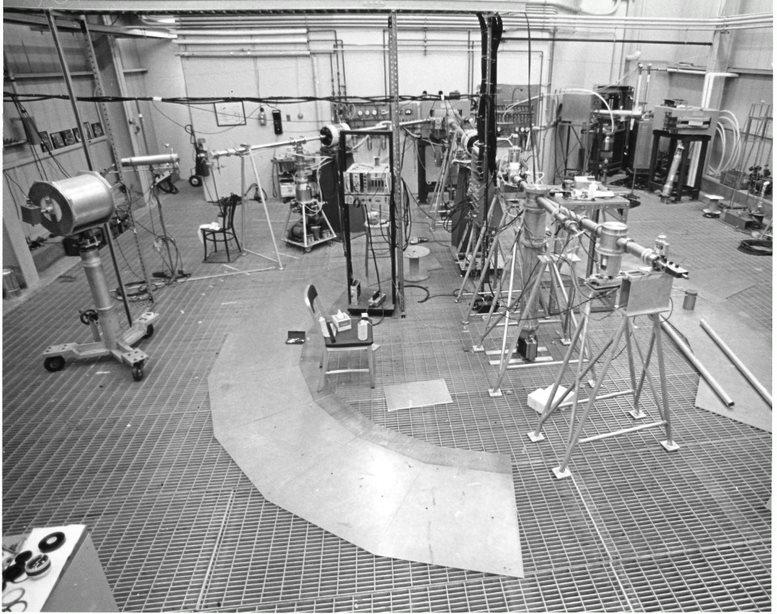Positive-Ion Van de Graaff Accelerator
A Van de Graaff accelerator is an electrostatic generator that, like rubbing a balloon, uses a moving belt to accumulate electric charge on a hollow metal globe on the top of an insulated column. This creates very high electric potentials, leading to voltages 1,000 times greater than ordinary household appliances. A Van de Graaff accelerator accelerates positively charged atoms — ions — produced in an ion source located in the globe. The globe is at high positive potential causing the ions to accelerate into a beam tube for use in experiments.

The NBS 3-MV accelerator, which was commissioned in 1967 and decommissioned in 1991, was placed vertically on the first floor of Building 245. The positive ion beam was directed downward and passed through the floor to a magnet room directly below the accelerator on the basement level. From the magnet room, the beam could be directed toward either of two experiment rooms.
The NBS 3-MV positive ion accelerator was used primarily as a source of neutrons for measurements of neutron standard cross sections (indicating its likelihood of striking a target nucleus), studies of fast neutron polarization, and precise neutron penetration experiments. One of the beam lines was used for Rutherford backscatter experiments, which could be used to determine the chemical composition of samples.

Yet another application was to use a proton beam on a fluorine-19 target to produce a radioactive oxygen-16 isotope. The high-energy gamma rays from the oxygen-16 decay were used to characterize gamma-ray detectors.

